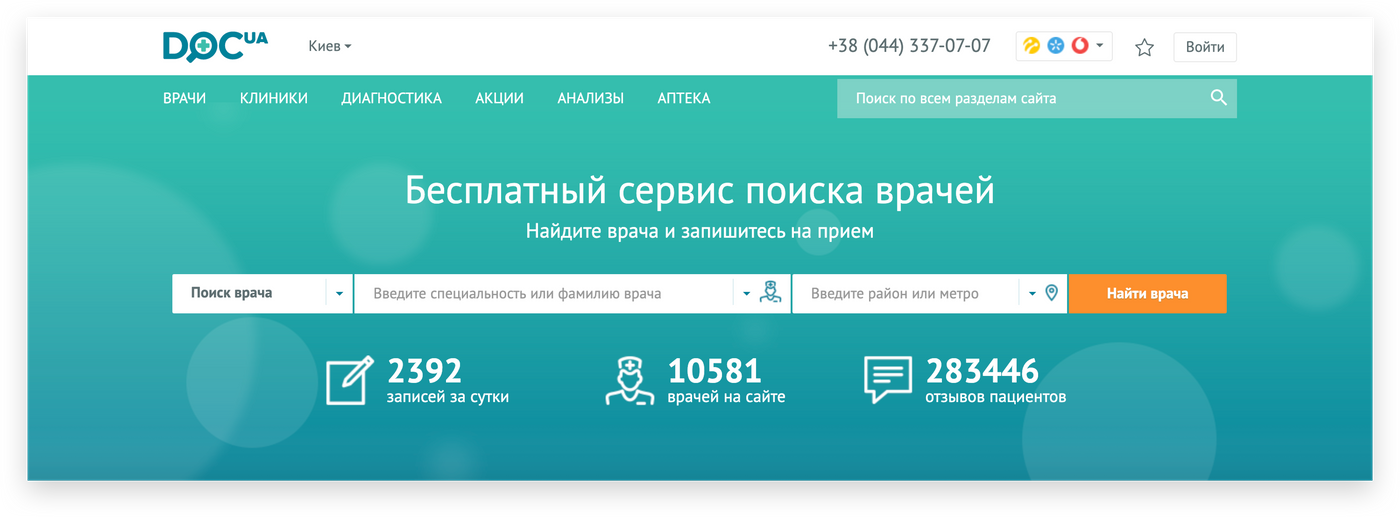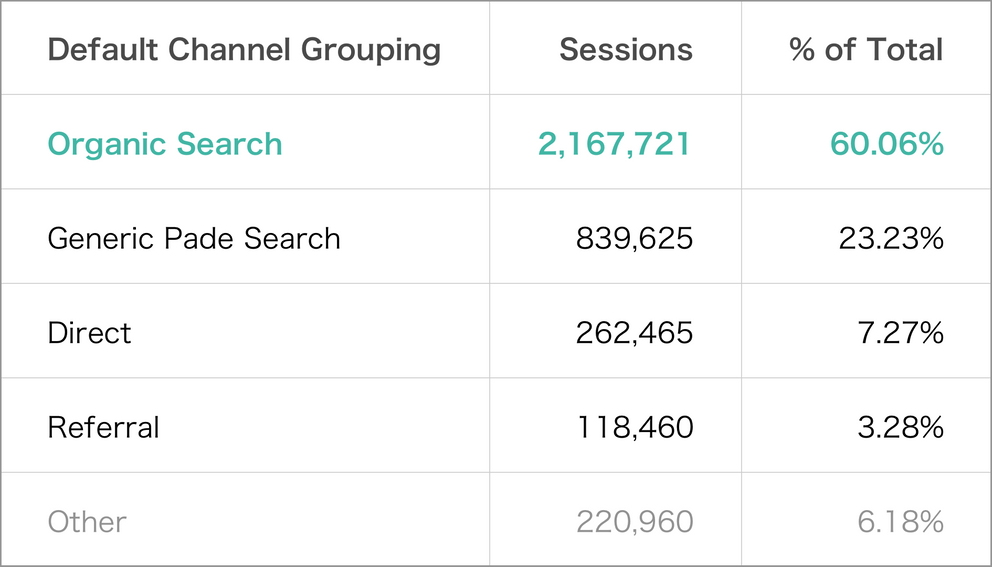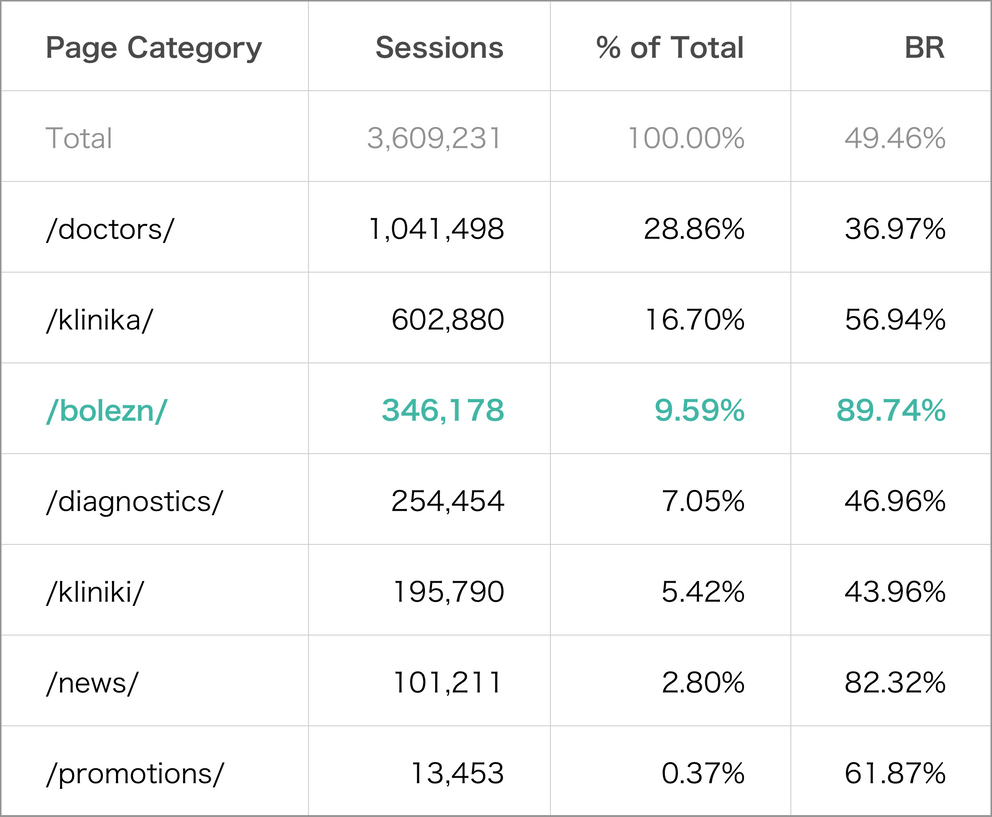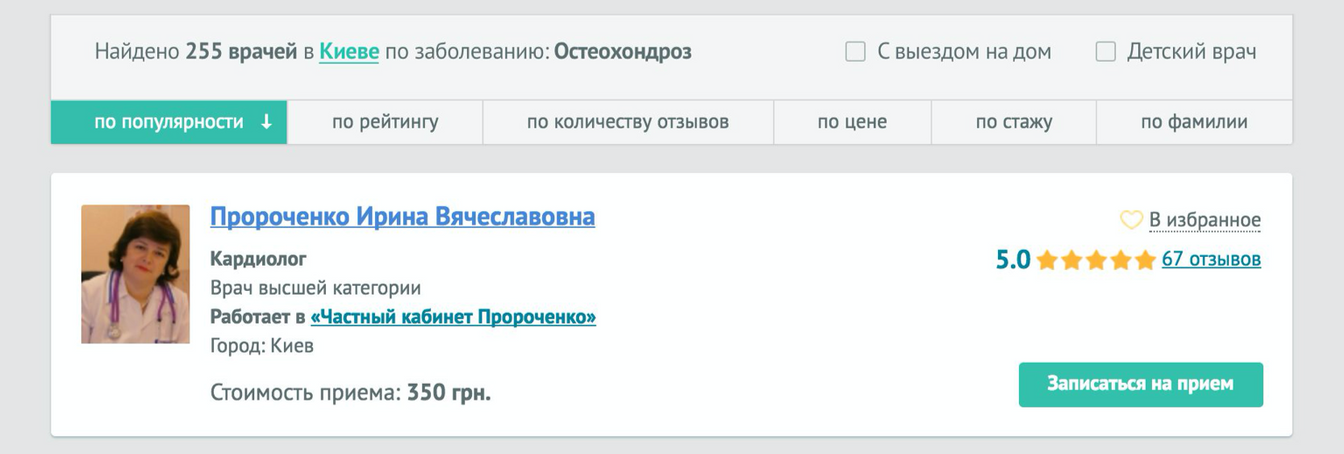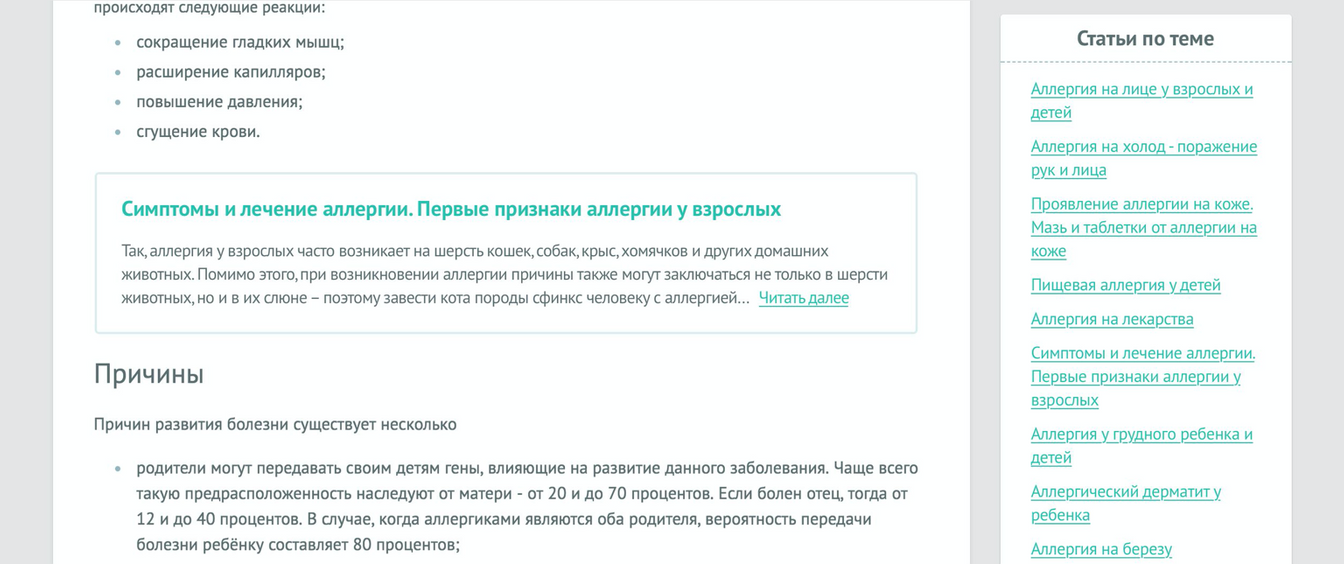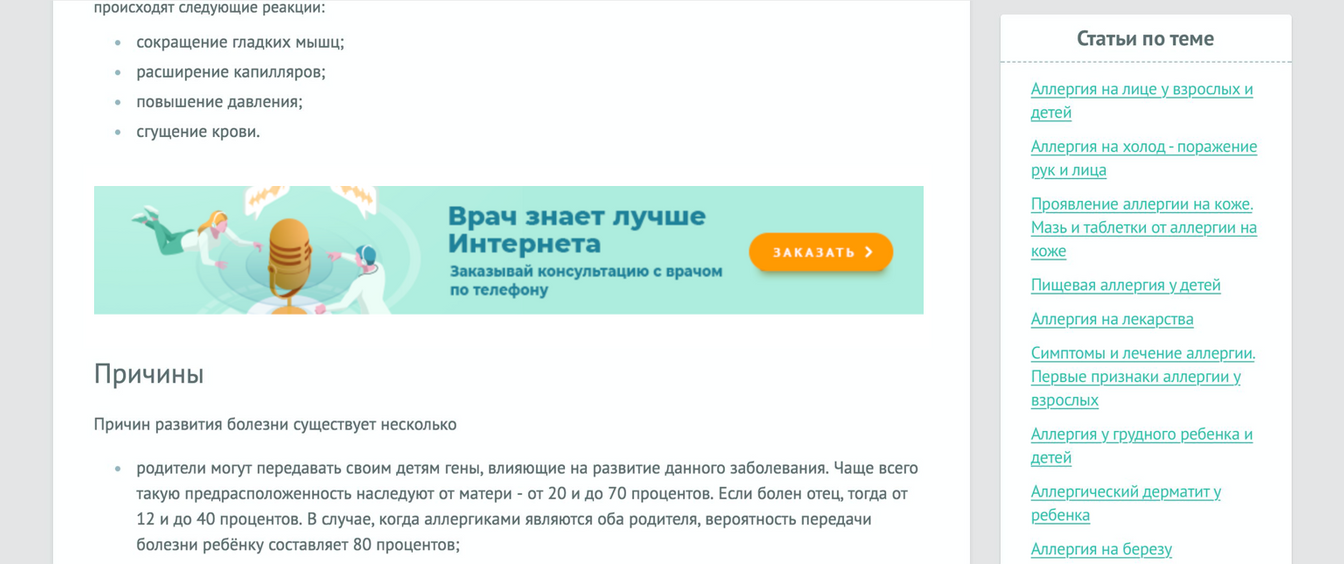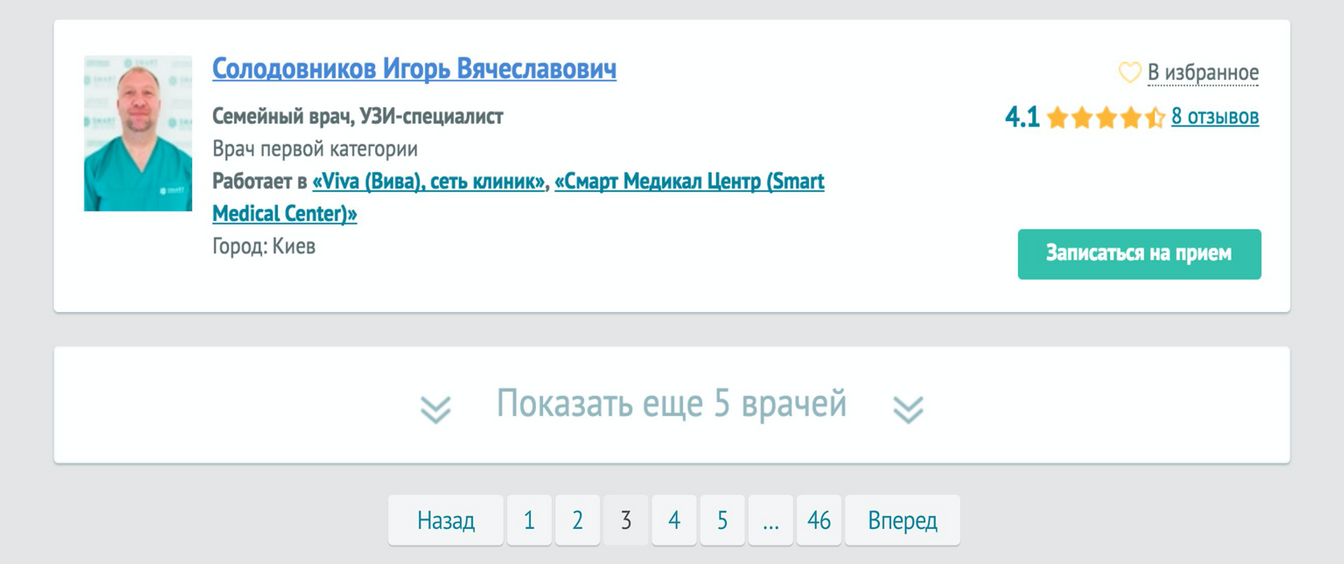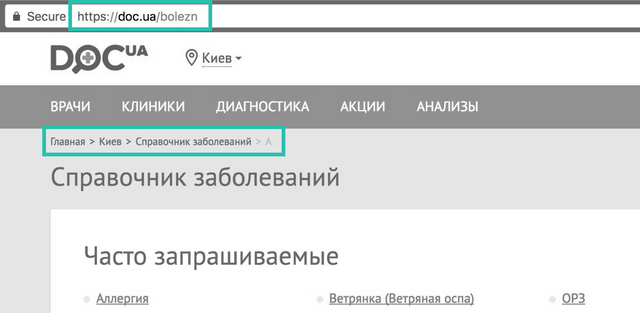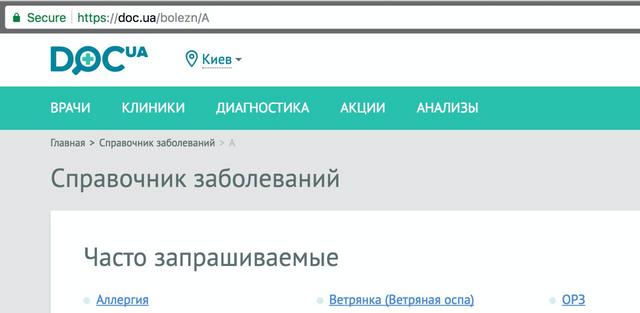Doc.ua
Online medical care appointment booking service
Date: Summer 2017
Disclaimer: This project was part of my educational program at Projector (Kyiv, UA). The main goal was to identify any existing product problem or issue based on data from Google Analytics and interview with stakeholders. Please note, that this research based on data from a period of 02/07/2017 - 08/07/2017. At this point, some changes might be made already and the product itself might look differently.
Hypothesis
Disease Directory pages redesign will bring more profit to the service.
Confirmation
First things first. Let's check where from the traffic go. As we see in a table below the significant part of it comes from Organic Search.
It means we need to pay attention to what people see in the first place when they are visiting Doc.ua — landing pages.
Below is a list of most popular pages people go directly from the search divided by categories.
On average, almost 10% of all users are browsing Disease Directory pages and Bounce Rate is twice higher than the general Bounce Rate.
Audience Analysis
Cohort analysis showed that visiting Disease Directory pages does not influence on User Retention.
When studying user behavior, no special patterns of behavior were revealed, except user engagement by country:
website: Ukraine - 92.01%, Russia - 4.57%
Disease Directory pages—Ukraine - 69.03%, Russia - 22.37%
By checking Frequency & Recency in Google Analytics we can see that people spend threefold more time on these pages, then on any others.
Also, there are no differences in user behavior when it comes to visiting pages about different diseases.
Based on all acknowledgment information and detailed review of the website itself I prepare a list of changes. As there was no straightforward goal for this project, I was looking into many possible solutions that can improve the product and bring more value both to clients and product owners.
Suggested Improvements
Basically, Disease Directory pages consist of two information blocks:
information about a particular disease
recommendations regarding further actions
All suggestions below are facing one of the objectives, either helping people to get as much information as possible regarding any disease or finding the optimal solution for the problem (e.g. doctor, hospital, diagnostic, etc).
To bring more clarity for some points I'm adding a b&w screenshot of the current version along with the proposed solution in color, so the improvements can be easier to understand.
Add filters to a list of recommended doctors
Having a list of good specialists is awesome, but what is better is the ability to narrow down through recommendations. As sometimes health problems might be very intimate and it's really tricky to find a suitable doctor.
To validate the solution: set up an Event for each filter and track how often it is used and its influence on conversion.
Change the order for issuing recommended doctors
For example: among dermatologists, female doctors are much more popular than male doctors. As an outcome, we can try to show more female doctors for this category.
To validate the solution: track its influence on conversion.
Add contextual links within a particular article
Adding even more useful information to the article will bring more value to the concerned users who willing to find answers: links to similar diseases, helpful resources, article previews.
On the other hand, having conversion elements like book a visit, diagnostics, relevant promotions, etc. will help a user to solve his problem faster and bring more money for the business.
To validate the solution: track average session duration and amount of conversions from these pages.
Make a uniform structure for pages
When searching a piece of information about the disease on Doc.ua users might come across regular articles within or along with Directory. It looks very similar to each other yet it's not the same type of information. Moreover, each disease page might have another structure which is frustrating. The goal is to give a user what they need as fast as possible, so keeping the same structure for all pages will help with that.
Change page layout, so directory page will differ from articles
Make a uniform structure for all disease pages
Add disease categories
Add FAQ section
Add clinics, hospitals, and diagnostics to recommended
Unify visual language
While surfing through the website I've noticed that at some points there are dissonances like different visual styles or colors for links or other CTA elements. Having a consistent visual language is very important, as its absence might lead to user errors and to fail with completion of the task. And in the case of this product, it is crucial.
Additional Recommendations
Here are some more solutions that are addressing points beyond the Directory of Diseases.
Add the ability to book a visit through an email
At this age of digital transformation and interactive forms, people tend to not speak to each other whenever possible, so the necessity to make a call can be frustrating and delay a visit to a doctor. For more convenience of people like this, we should add an option to book a visit via email.
To validate the solution: compare the number of email applications to requests through the website and calls.
(Please note: adding an online booking is impossible due to government health regulations and other technical issues which were discussed with Product Owner)
Show amount of pages for recommended doctors
As the current user has a specific goal and it is about finding the right doctor, we have to provide the actual amount of specialists (give the ability to see the number of all pages)
To validate the solution: track amount of pageviews for doctors from the last pages.
Match breadcrumbs and pages' URLs
Matching breadcrumbs with pages' URLs will simplify further analysis for the Product Team and also show a clear hierarchy to a consumer.
Remove city from a Directory as diseases have no geographical dependency
Create a separate URL or event for each disease and category
Assign categories for articles
At this point, there are lots of articles attached to diseases with tonnes of information. Thing is that depth of knowledge in it is also very different, as an article about some allergies for a patient and a doctor will significantly differ as those type of audience has absolutely different background knowledge about the topic. To not overwhelm each type of user with irrelevant information we should inform them who is the target audience for a particular article.
